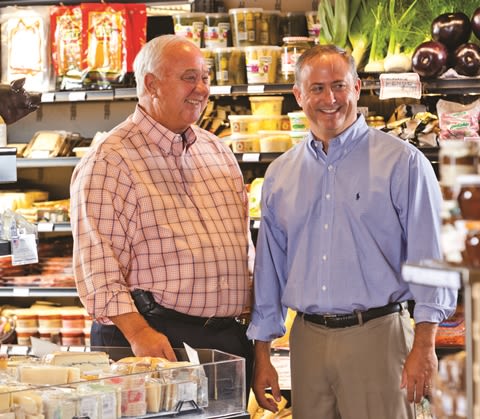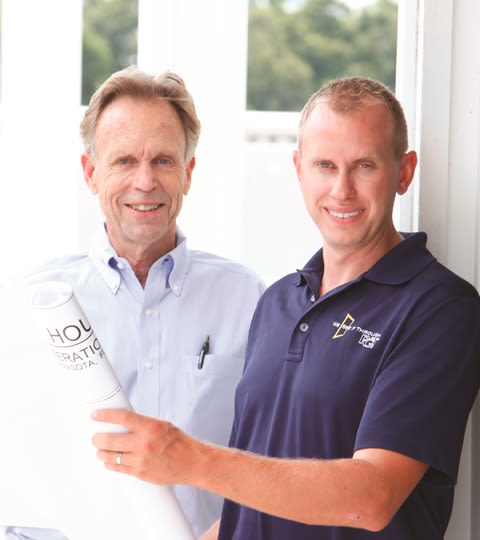Focused Philanthropy

Businesses need to think strategically about their philanthropy. By Kim Hackett.
Successful companies know that “doing good” is good for business. But approaching philanthropy strategically—supporting a few carefully selected community causes instead of writing checks to dozens of fund raisers—can pay greater dividends, both for your company and the organizations you support.
Choosing the right fit can be difficult since this region is flooded with nonprofits seeking support. “But businesses have to ask themselves, ‘How can I be more proactive and strategic?’ to make a greater impact,” says Susan Bowie, director of nonprofit strategy at the Community Foundation of Sarasota County. “Philanthropy helps brand what that business believes in.”
Ninety percent of consumers say they want to know which charities a business supports, according to a study by national public relations firm Cone Inc. About 79 percent say they would switch to a brand that supports a cause they care about. Ben & Jerry’s, for example, is popular not just because its ice cream tastes good.
The Gulf Coast Community Foundation advises its corporate donors to think beyond “flash in the pan” giving, to something that has more impact and extends beyond the current fund-raising cycle. This approach can build upon your brand, generate excitement and unity among employees, and create a “halo effect” among customers, who feel good about purchasing your product or service.
“You don’t want to be a logo in a sea of logos,” on a gala program, says Roxanne Joffe, who recently formed MagnifyGood to forge connections between businesses and nonprofits as an extension of her CAP Brand Marketing firm. Philanthropy should be part of your marketing strategy, she says. Know your customer—his or her likes and dislikes—and then find a cause that resonates with your employees and makes sense for your business.
Here are three strategic business-philanthropic partnerships that work.
Morton’s Gourmet Market (pictured at top)
Eddie Morton has watched as former bag boys at Morton’s Market have gone on to become hotel CEOs or returned to work at his family-operated business after culinary school.
Establishing the Morton Culinary Arts Education Fund at the Community Foundation of Sarasota County was a natural extension of his company’s mission. “Culinary education is a great way to bring young people back to Sarasota,” Morton says.
Morton’s has raised enough money through in-store wine-and-cheese events and a summer brew bash to begin awarding $1,000 college or technical school scholarships for students at any Sarasota County high school. Students are eligible for the culinary education scholarship for four years as long as they maintain good grades.
Morton is also participating in a pilot program, Two Generations, spearheaded by the Community Foundation of Sarasota County. The idea behind Two Generations is that to pull people out of poverty, you have to work with both parents and their children. Funds from Morton’s and other businesses will be tapped for scholarships for parents to pursue certifications in culinary arts, nursing or childcare. To qualify, parents must show that their children are improving their reading and social skills. Morton eventually hopes to offer internships and possibly jobs to teenage and parent scholarship winners.
Smaller donations still matter to Morton. The company will continue to provide gourmet food baskets to charity auctions and make modest donations to community groups, he says. But he sees the scholarship fund as having a more lasting community impact.
“It’s a way to learn what the business is about and get an education,” he says.

DeWitt Motors and ITN
DeWitt Motors’ owner Edward Kapreilian was not thinking “strategic philanthropy” when two-year-old ITNSarasota crossed his path, but he knew it was a good fit for his car rental and sales business.
ITNSarasota, an affiliate of ITN America (Independent Transportation Network), provides rides for seniors in Manatee and Sarasota counties using volunteer and paid drivers.
Seniors pay for each ride, but it is more than cab service; engaged volunteers assist them with groceries and getting in and out of the car. Seniors who lose driving privileges can donate their vehicle to ITN in exchange for free transportation, sometimes for years.
ITN has made giving up the car keys less painful for the elderly and their adult children, who often have to make that difficult decision. And DeWitt has made the transition easier, says Caroline Chambliss, ITN executive director.
DeWitt appraises the vehicles with the seniors present, explaining the process. The company in some cases will purchase the vehicle. Proceeds go to ITN, which credits the senior with free miles. DeWitt also provides discounted fleet maintenance for the nonprofit. “It’s a difficult situation, and we try to make it a positive experience,” Kapreilian says.
Kapreilian says ITN “hit home” because in his 20-plus years renting cars to snowbirds, he has seen long-time customers lose their driving privileges. “I feel for them; it’s an emotional experience,” Kapreilian says.
The transaction with ITN ends on a positive note, he says, because the seniors feel like they are donating to a good cause; plus, they have free transportation and independence.
“With ITN, you are not getting into a dusty old cab,” says Kapreilian. “It’s a wonderful thing.”

PGT and Florida House Institute
When Venice window manufacturer PGT Industries decided a few years ago to be more focused in its philanthropy, CEO Rod Hershberger says there was no question that its 20-plus-year relationship with the Florida House Institute would continue.
"It plays well with what we do," Hershberger says.
The Florida House, set to reopen this fall after a six-year hiatus, was the first “green building” demonstration home in the country and featured PGT windows and doors. This time around, the Florida House, located on the Sarasota County Technical School campus, is focusing on retrofitting older homes and structures with high-performance products and designs.
PGT will be a tangible part of the experience. Visitors will see the latest window and door technology and design, such as windows that are positioned to take in the afternoon sun to reduce lighting costs or designed to cut traffic noise.
Hershberger says beyond helping the nonprofit and encouraging environmentally friendly building practices, the Florida House has been a laboratory for PGT. "It's a chance for us to experiment," he says. "If it doesn't work well, we'll learn from it."
The glass materials are a small part of PGT's commitment to the Florida House. Executives have served on the board of directors over the years and about 30 engineers and other employees are now helping with design, engineering and manufacturing. Dealers who sell PGT products install the windows for free.
As far as its overall approach to philanthropy, the company typically matches contributions that employees want to make to their favorite causes, and all PGT executives sit on nonprofit boards. The company heavily supports Big Brothers and Big Sisters "because our No. 1 focus is on family and kids," Herschberger says.
It’s all part of PGT’s strategy to make a difference. “We changed our focus a few years ago and pulled back from doing $100 here and $100 there," he says.
MAKING NONPROFIT PARTNERSHIPS WORK
Be authentic. Choose the causes that have meaning for you. Commitment starts at the top, but should trickle down to everyone within the company.
Ask for employee input.
Do more than fund raising. Attend the nonprofit’s events and provide leadership.
Use social media to get the message out about what your company is doing in the community.